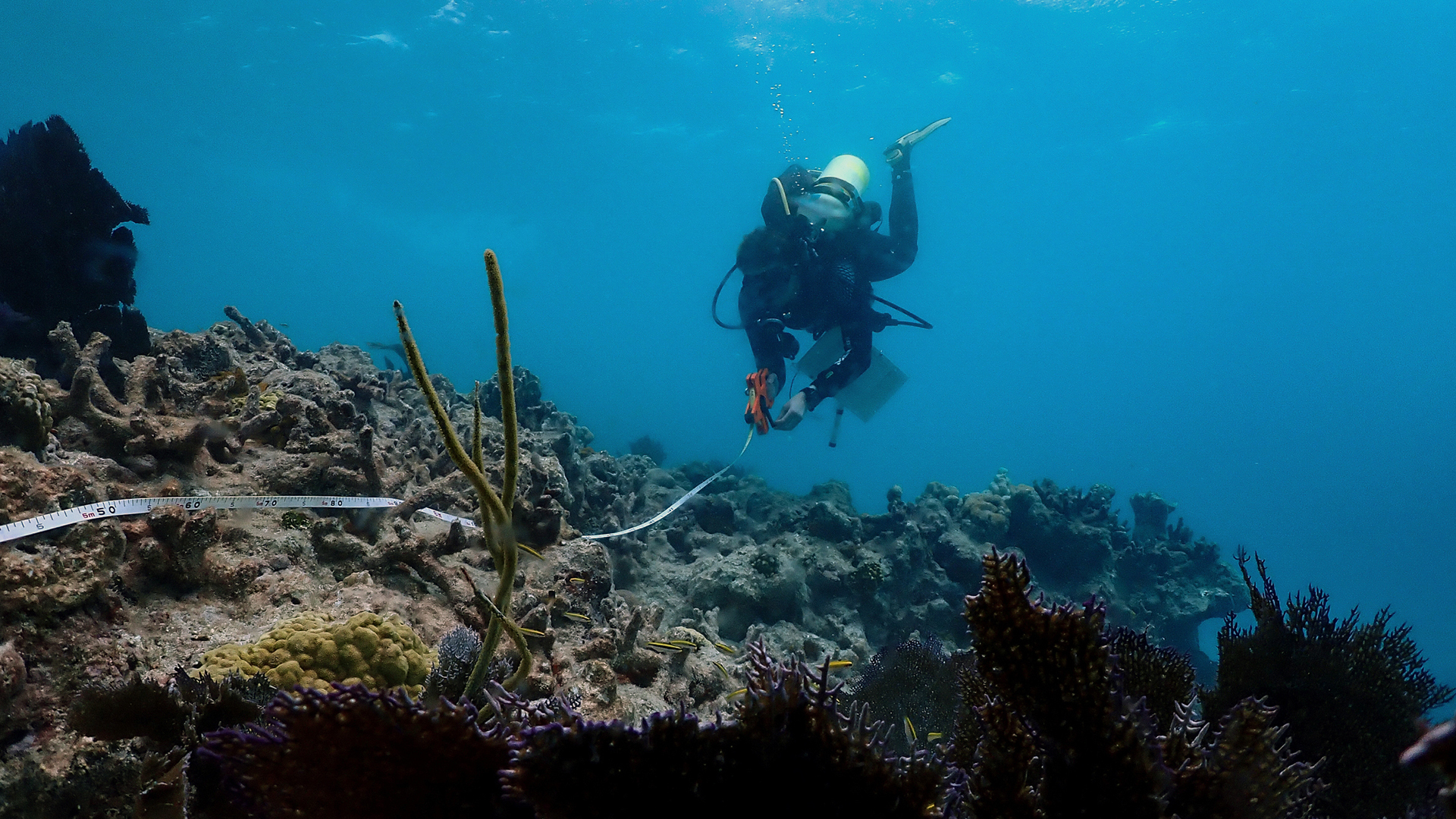
[EMMA STOLTZFUS]
February is on track to become the ninth month in a row with record-breaking temperatures. This spells a lot of concerns for the planet. One of which is underwater in the Florida Keys, where rising marine temperatures have been bleaching the coral reefs. The high temperatures last summer caused so much damage that the National Oceanic and Atmospheric Administration (NOAA) added three more levels to a two-level alert system in order to measure the impact.
By the new alert system, the Florida Keys hit alert levels four and five last summer, warning of the potential for near complete coral mortality. Delicate coral conservation nurseries had to be evacuated from the ocean and installed in extensive land-based operations. Ocean temperatures reached triple digits in some areas, and didn’t cool down enough to reinstall the coral nurseries until late October.
In a recent NOAA survey of five coral restoration sites off the Florida Keys, several important corals were either completely decimated or barely found.
Katey Lesneski, Mission: Iconic Reefs Research and Monitoring Coordinator | NOAA
This certainly did feel like a step back. Many of the corals that we did survey are those out of corals that are part of reef restoration.
[EMMA STOLTZFUS]
That’s Katey Lesneski, she’s the Mission: Iconic Reefs Research and Monitoring Coordinator with NOAA. Katey and a team of researchers took a survey vessel through the Florida Keys looking for elkhorn and staghorn corals.
Katey Lesneski, Mission: Iconic Reefs Research and Monitoring Coordinator | NOAA
When they’re healthy, they’re this really beautiful, robust tan orange brown color. That is a nice contrast to the surrounding blue waters. So you can pretty easily pick out the healthy ones as we went further south on the cruise on our way down to Key West. Unfortunately, we did find more mortalities. So colonies of coral that sadly haven’t been alive for several months.
[EMMA STOLTZFUS]
Less than 22% of staghorn corals survived, and those that did were only found in the two northernmost sites. The Looe Key Reef in the lower Florida keys had no live staghorn or elkhorn corals.
Katey Lesneski, Mission: Iconic Reefs Research and Monitoring Coordinator | NOAA
Now they basically essentially blend in with the background. They’re covered in brown and green algae and look quite drab and they don’t stand out. So we were sad to see that. But we did find survivors of elkhorn and staghorn coral at some of those reefs, which definitely gives us hope.
[EMMA STOLTZFUS]
That hope, and a bit of science, is looking to the survivors of the marine heat wave to direct their efforts in coral conservation
Katey Lesneski, Mission: Iconic Reefs Research and Monitoring Coordinator | NOAA
We can look at the survivors that we found from this past summer’s marine heatwave and we can learn a lot more about them. Is it something about their genetic lineage? Is it the relationship that they have with symbiotic algae that gives them food? And then we can make decisions about how better to use science to restore reefs while keeping in mind the effects of climate change.







